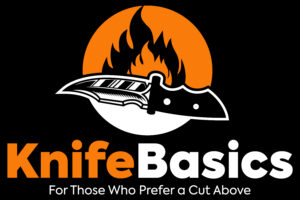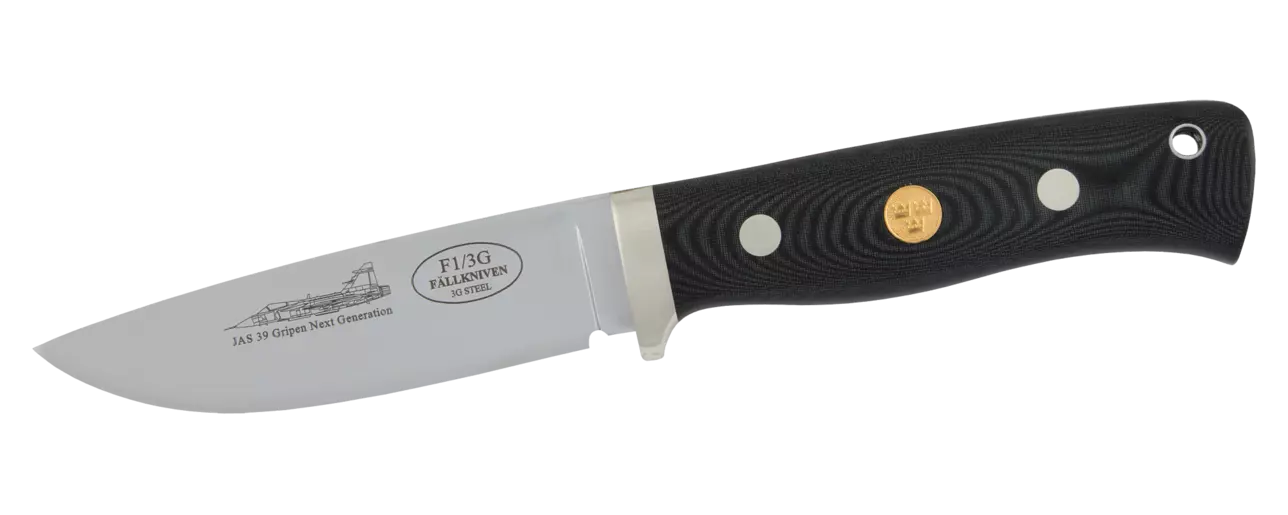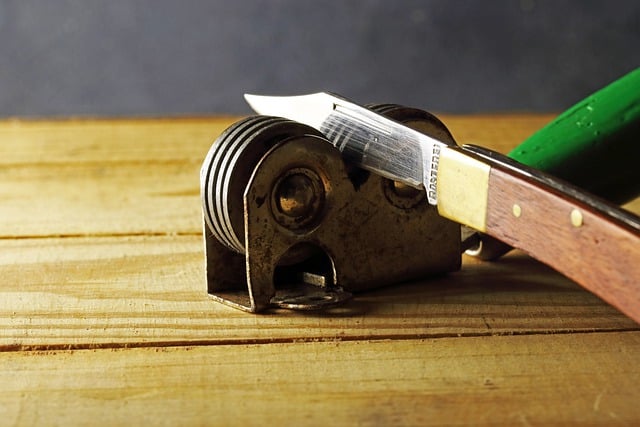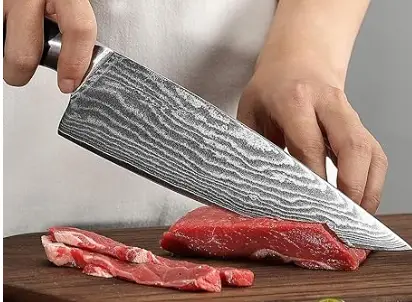What is 3G steel?
Depending on the manufacturer, it is essential to point out that SGPS is also referred to by other names, including Tekefu SG2, Tekefu MC63, and the Kobelco R2.
Fallkniven sources their core, SGPS, from Tekefu and renames it to 3G after laminating it with VG2 steels. 3G knife steel is suitable for the manufacturer of survival knives because of its exclusive strength and corrosion resistance attained from the lamination.
Properties of 3G steel
3G Steel Hardness
3G steel has a hardness of 62 HRC as per the Rockwell hardness scale, but it differs depending on the heat treatment used by the manufacturer. As stated earlier, 3G knife steel is a laminate of VG2 and SGPS steel. SGPS steel hardness is crucial as it is the steel exposed for cutting in the laminate.
The steel is manufactured following the powder metallurgy process, which uses fine grains, which make the end product very hard and tough. The high hardness of this steel is associated with many good properties of this steel, as discussed below.
3G Steel Edge retention
3G knife steel offers excellent edge retention thanks to its hardness and the fine carbide structures in its ally composition. Blades made from this steel retain a sharp edge for a long time, even with frequent use.
If you have been struggling with knives that require sharpening after every use, the varieties of 3G laminate steel knives will never disappoint you.
3G knife steel edge retention is similar to that of S35VN steel and new Magnacut steel. It is better than Bohler N690, Japanese AUS 8 steel, and nitrogen-based LC200N stainless steel.
3G Steel Wear resistance
3G steel does not wear out easily, thanks to its high hardness. It can serve you across generations even with heavy usage and sharpening. Knives made from 3G are more expensive than regular knives, but their efficiency and durability is worth the extra coins.
3G Steel Toughness
The toughness of steel can sometimes be inversely proportional to its hardness. However, this is not the case with 3G laminate steel; its chemical composition gives it decent toughness despite its hardness.
3G steel toughness is better than AISI 440C steel, BD1N steel, and 154CM steel, but it falls short when compared to Nitro V steel or 14C28N stainless steel.
The perfect hardness and toughness balance make this steel a top choice for fixed blades, especially survival knives.
3G Steel Corrosion resistance
Corrosion resistance is another area of excellence for 3G steel. SGPS steel contains 15% chromium which is enough to make carbides and contribute to corrosion resistance. The Molybdenum in its composition also contributes to its corrosion resistance.
3Gsteel is laminated with VG2 steel, which is high chromium steel, which adds to its ability to keep rust and stains away. VG2 stainless steel rust and stain resistance is better than VG1 stainless steel.
Ease of Sharpening 3G steel
3G steel is hard steel, and therefore it can be very challenging to sharpen, especially for knife users without good sharpening skills. This is not to say that it cannot get sharp, but you will spend a lot of time and energy.
If you are still learning knife sharpening, consider investing in modern equipment or take your 3G knives for professional sharpening; otherwise, you will not find joy in 3G steel knives.
The good thing is that the knives hold a sharp edge for a long time, and therefore, you do not have to go through the stressful sharpening procedure often.
3G steel vs other steel
3G steel vs CoS steel
3G and CoS are both laminated steel, but 3G contains more carbon than CoS; hence it is harder, with better edge retention, wear resistance, and corrosion resistance.
Cos steel shines in toughness because 420J2 its laminate is very tough. Both steels are very difficult to sharpen.
3G Steel vs Elmax
3G steel is better than Elmax steel in Corrosion resistance and toughness. The core steel SGPS offers a similar level of edge retention to Elmax; however, the laminite with VG2 steel increases the corrosion resistance and toughness of 3G over Elmax.
Despite attaining a high Rockwell hardness, it is much easier to sharpen 3G blade steel than to sharpen Elmax steel. This can be attributed to the lack of highly wear-resistance Vanadium carbides that are in large quantities in Elmax steel.
Elmax is highly wear-resistant while still being stainless. Elmax steel thus beats 3G steels in wear resistance but also makes it hard to sharpen the blades when the need arises.
In general 3G knife steel is better than Elmax steel for knives due to its outstanding balance of toughness, edge retention, and ease of sharpening.
3G Steel vs M390
The main difference between 3G knife steel and M390 steel is that 3G gives better performance in terms of toughness than M390 steel blades.
M390 steel, on the other hand, provides better edge retention and corrosion resistance over laminate 3G knife steel. It is also easier to sharpen a 3G knife steel compared to sharpening M390 knife steel.
Bohler M390 steel was created to be highly wear-resistant and still maintain stainless steel properties. It has a high amount of chromium and vanadium in its composition which enables it to form extremely tough carbides which are excellent in edge retention and wear resistance.
The more than 18% chromium in M390 steel alloy composition allows it to form carbide and some few percentages left for corrosion resistance. 3G blade steel is better blade steel for survival knives due to its ease of sharpening and the outstanding balance between toughness and edge retention.
3G steel vs VG10
The main difference between 3G steel and VG10 steel is that 3G steel is a powder metallurgy-produced steel while VG10 steel is produced conventionally. 3G blade steel thus offers better performance in terms of edge retention and ease of sharpening than VG10 stainless steel blades.
The VG2 steel in 3G laminate steel improves the toughness and corrosion resistance of 3G knife steel over VG10 steel. Without VG2 steel, SGPS steel toughness and corrosion resistance performance are equal to VG10 stainless steel.
Despite being expensive, 3G knives offer better performance than VG10 steel knives. The added toughness, corrosion resistance, and ease of sharpening make 3G knives better for survival and bushcraft knives.
3G steel vs 3V steel
The main difference between 3G steel and 3V steel is that 3G knife steel is stainless steel while 3V steel is non-stainless steel. 3G blade steel will offer superb corrosion resistance over 3V steel blades, 3V steel, on the contrary, offers almost twice the toughness of 3G steel.
3G steel blades also offer slightly better edge retention and ease of sharpness than 3V steel blades. Both 3G and CPM 3V steel are produced through a powder metallurgy process. CPM 3V, however, was designed to be highly wear-resistant while still offering superb toughness.



